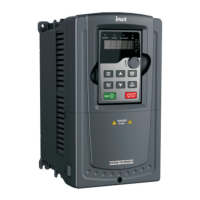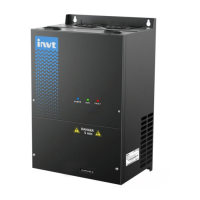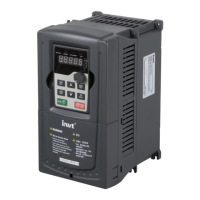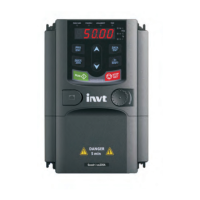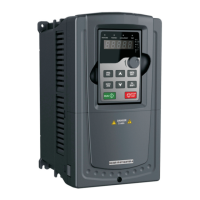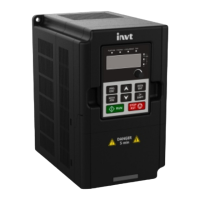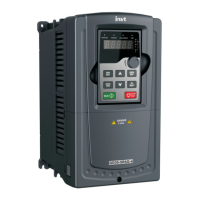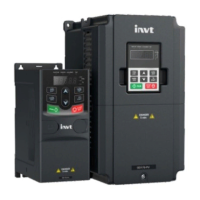Goodrive30 Series VFD Communication protocol
-127-
7.2.2.2 RTU communication frame error check modes
During the transmission of data, errors may occur due to various factors (such as
electromagnetic interference). For example, if the sending message is a logic "1", A-B
potential difference on RS485 should be 6V, but in reality, it may be -6V because of
electromagnetic interference, and then the other devices take the sent message as logic "0".
Without error check, the data receiving device cannot identify data errors and may make a
wrong response. The wrong response may cause severe problems. Therefore, the data must
be checked.
The check is implemented as follows: The transmitter calculates the to-be-transmitted data
based on a specific algorithm to obtain a result, adds the result to the rear of the message, and
transmits them together. After receiving the message, the receiver calculates the data based
on the same algorithm to obtain a result, and compares the result with that transmitted by the
transmitter. If the results are the same, the message is correct. Otherwise, the message is
considered wrong.
The error check of a frame includes two parts, namely, bit check on individual bytes (that is,
odd/even check using the check bit in the character frame), and whole data check (CRC
check).
Bit check on individual bytes (odd/even check)
You can select the bit check mode as required, or you can choose not to perform the check,
which will affect the check bit setting of each byte.
Definition of even check: Before the data is transmitted, an even check bit is added to indicate
whether the number of "1" in the to-be-transmitted data is odd or even. If it is even, the check
bit is set to "0"; and if it is odd, the check bit is set to "1".
Definition of odd check: Before the data is transmitted, an odd check bit is added to indicate
whether the number of "1" in the to-be-transmitted data is odd or even. If it is odd, the check bit
is set to "0"; and if it is even, the check bit is set to "1".
For example, the data bits to be transmitted are "11001110", including five "1". If the even
check is applied, the even check bit is set to "1"; and if the odd check is applied, the odd check
bit is set to "0". During the transmission of the data, the odd/even check bit is calculated and
placed in the check bit of the frame. The receiving device performs the odd/even check after
receiving the data. If it finds that the odd/even parity of the data is inconsistent with the preset
information, it determines that a communication error occurs.
Cyclical Redundancy Check (CRC) method
A frame in the RTU format includes an error detection domain based on the CRC calculation.
The CRC domain checks all the content of the frame. The CRC domain consists of two bytes,
including 16 binary bits. It is calculated by the transmitter and added to the frame. The receiver
calculates the CRC of the received frame, and compares the result with the value in the
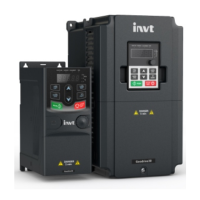
